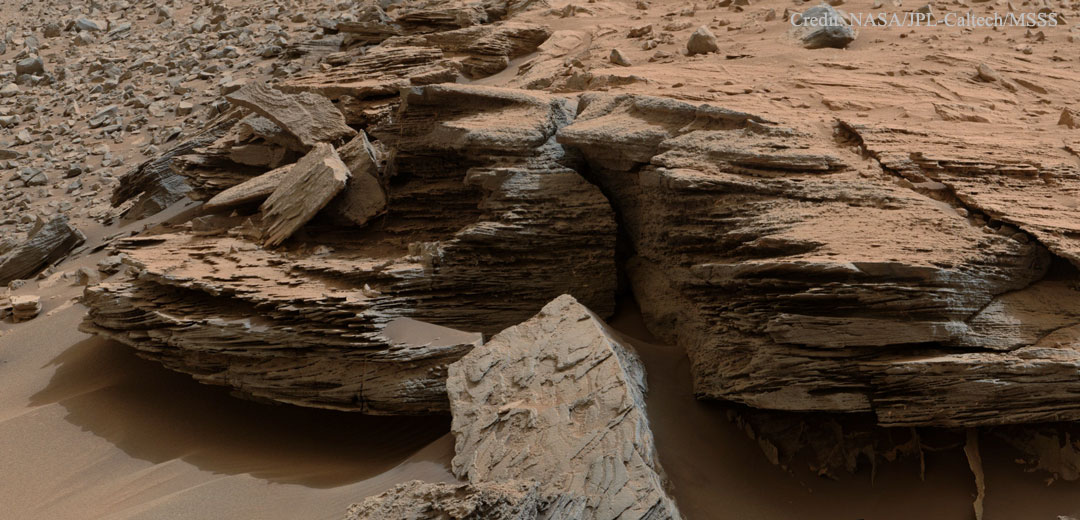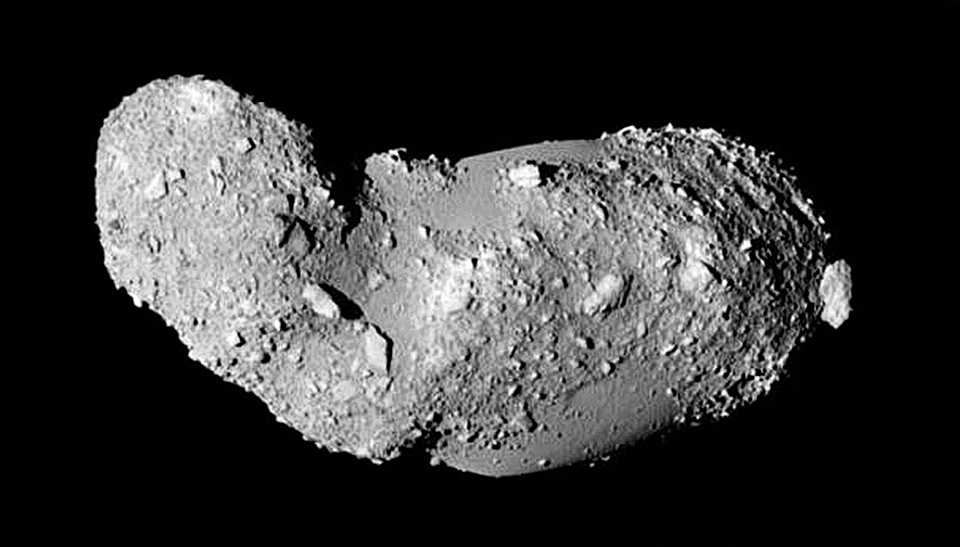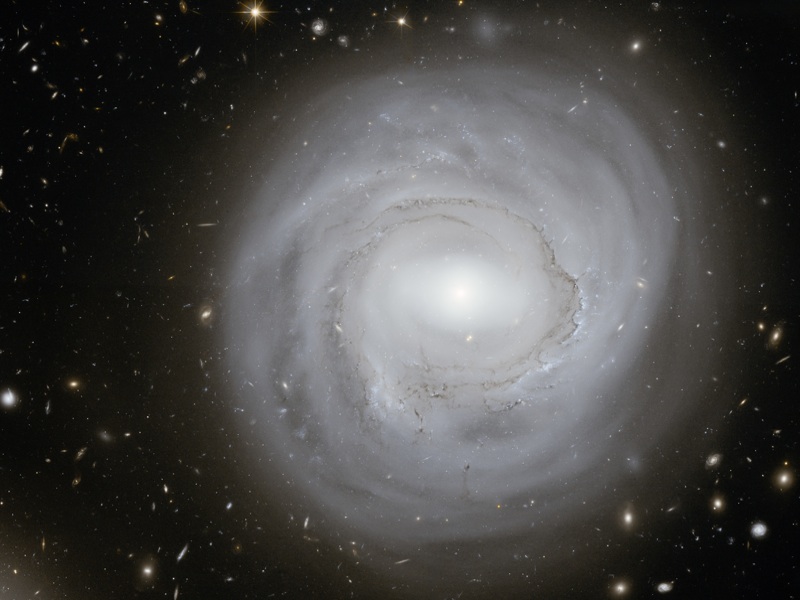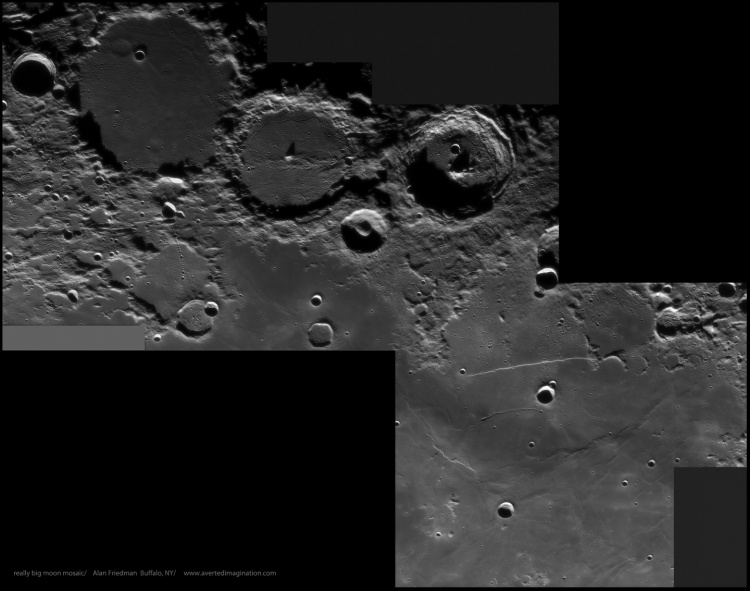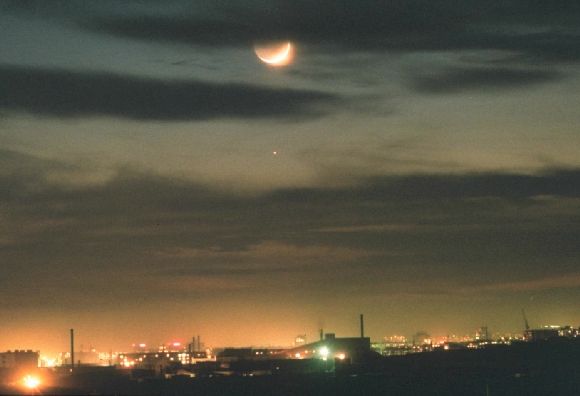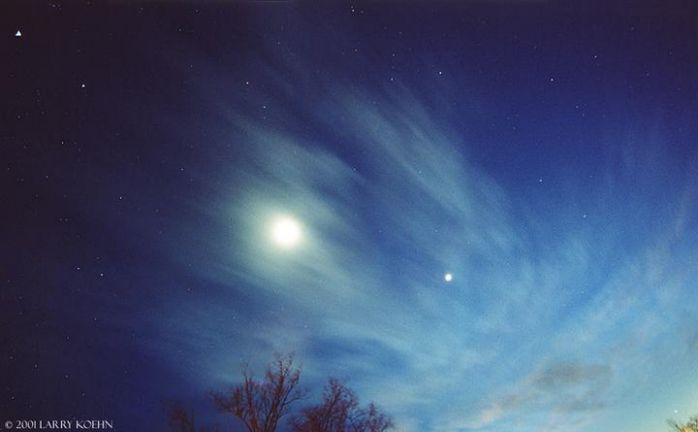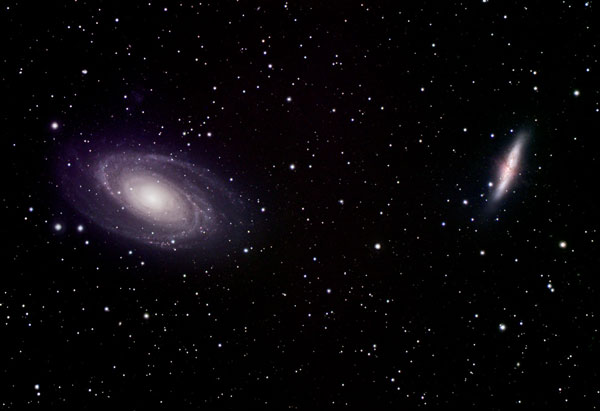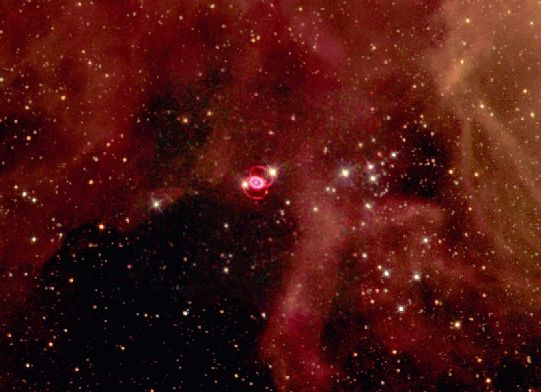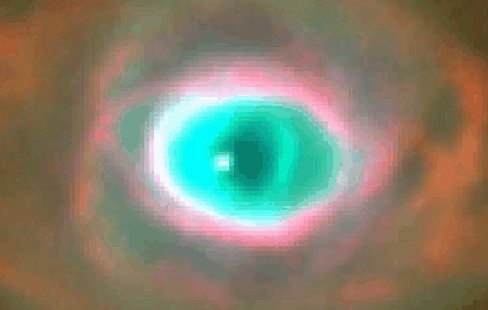| << Previous | Index | Next >> |
2015 What caused these Martian rocks to be layered? The leading hypothesis is an ancient Martian lake that kept evaporating and refilling over 10 million years -- but has now remained dry and empty of water for billions of years. The featured image, taken last November by the robotic Curiosity rover, shows one-meter wide Whale Rock which is part of the Pahrump Hills outcrop at the base of Mount Sharp. Also evident in the image is cross-bedding -- rock with angled layers -- which were likely facilitated by waves of sand. Curiosity continues to find many layered rocks like this as it continues to roll around and up 5.5-km high Mount Sharp.
2014 Where are the craters on asteroid Itokawa? Missing -- unexpectedly. The Japanese robot probe Hayabusa approached the Earth-crossing asteroid in 2005 and returned pictures showing a surface unlike any other Solar System body yet photographed -- a surface possibly devoid of craters. The leading hypothesis for the lack of common circular indentations is that asteroid Itokawa is a rubble pile -- a bunch of rocks and ice chunks only loosely held together by a small amount of gravity. If so, craters might not form so easily -- or be filled in whenever the asteroid gets jiggled by a passing planet or struck by a massive meteor. Recent Earth-based observations of asteroid Itokawa have shown that one part of the interior even has a higher average interior density than the other part, another unexpected discovery. The Hayabusa mission returned soil samples from Itokawa which are also giving clues the ancient history of the unusual asteroid and our entire Solar System.
2013 One hundred years ago today the Great Meteor Procession of 1913 occurred, a sky event described by some as "magnificent" and "entrancing" and which left people feeling "spellbound" and "privileged". Because one had to be in a right location, outside, and under clear skies, only about 1,000 people noted seeing the procession. Lucky sky gazers -- particularly those near Toronto, Canada -- had their eyes drawn to an amazing train of bright meteors streaming across the sky, in groups, over the course of a few minutes. A current leading progenitor hypothesis is that a single large meteor once grazed the Earth's atmosphere and broke up. When the resulting pieces next encountered the Earth, they came in over south-central Canada, traveled thousands of kilometers as they crossed over the northeastern USA, and eventually fell into the central Atlantic ocean. Pictured above is a digital scan of a halftone hand-tinted image by the artist Gustav Hahn who was fortunate enough to witness the event first hand. Although nothing quite like the Great Meteor Procession of 1913 has been reported since, numerous bright fireballs -- themselves pretty spectacular -- have since been recorded, some even on video.
2012
Video Credit & Copyright: Christian Mülhauser; Music: Elemental by Pulse Faction; Path of Stars by Jonathan Geer
2011 It's stars versus gas mountains in NGC 2174 and the stars are winning. More precisely, the energetic light and winds from massive newly formed stars are evaporating and dispersing the dark stellar nurseries in which they formed. The structures of NGC 2174 are actually much thinner than air and only appear as mountains due to relatively small amounts of opaque interstellar dust. A lesser known sight in the nebula-rich constellation Orion, NGC 2174 can be found with binoculars near the head of the celestial hunter. About 6,400 light-years distant, the entire glowing cosmic cloud covers an area larger than the full Moon and surrounds loose open clusters of young stars. The above image from the Hubble Space Telescope shows a dense interior region which spans only about three light years while adopting a color map that portrays otherwise red hydrogen emission in green hues and emphasizes sulfur emission in red and oxygen in blue. Within a few million years, the stars will likely win out completely and the entire dust mountain will be dispersed.
2010 Sometimes, the space shuttle launches at night. Pictured above, the space shuttle Endeavour lifted off in yesterday's early morning hours from Launch Pad 39A in Kennedy Space Center, Florida, USA, bound for the International Space Station (ISS). A night launch, useful for reaching the space station easily during some times of the year, frequently creates vivid launch imagery. The shuttle, as pictured above, is framed by an enormous but typical exhaust plume ejected as the shuttle's powerful rockets began lifting the two million kilogram space bus into Earth orbit. Endeavour's mission, labeled STS-130, includes the delivery of the Tranquility module to the space station. Tranquility will provide extra room for space station astronauts and includes a large circular set of windows designed to bestow vastly improved views of the Earth, the night sky, and the space station itself.
2009 How far away is spiral galaxy NGC 4921? Although presently estimated to be about 320 million light years distant, a more precise determination could be coupled with its known recession speed to help humanity better calibrate the expansion rate of the entire visible universe. Toward this goal, this image was taken by the Hubble Space Telescope in order to help identify key stellar distance markers known as Cepheid variable stars. Since NGC 4921 is a member of the Coma Cluster of Galaxies, refining its distance would also allow a better distance determination to one of the largest nearby clusters in the local universe. The magnificent spiral NGC 4921 has been informally dubbed anemic because of its low rate of star formation and low surface brightness. The remarkably sharp image was made with Hubble's Advanced Camera for Surveys, currently in need of repair. Visible in the image are, from the center, a bright nucleus, a bright central bar, a prominent ring of dark dust, blue clusters of recently formed stars, several smaller companion galaxies, unrelated galaxies in the far distant universe, and unrelated stars in our Milky Way Galaxy.
2008 An intricate network of lighting plays across the 130 foot high Rotating Service Structure (RSS) in this dramatic night view of the Space Shuttle Atlantis on the Kennedy Space Center's launch pad 39A. Small human figures visible in silhouette emphasize the structure's enormous scale. Seen here after rolling back before Thursday's shuttle launch, the RSS provides pre-launch access to the orbiter and its payload. For this mission to the International Space Station, STS-122, Atlantis' payload is the European Space Agency's Columbus science laboratory. During the mission, three space walks are planned to attach the Columbus lab. Atlantis is expected to dock with the space station today.
2007 These three ancient, large impact craters lie on the north eastern shores of Mare Nubium, the lunar Sea of Clouds. Along the top of the stark mosaic (left to right) are the namesakes of Ptolemaeus, Alphonsus and Arzachel. The picture offers a remarkably detailed view of the well-studied region with shadows emphasizing the large crater central peaks and slumping walls. Careful examination also reveals the 110 kilometer long Straight Wall, a fault 200-300 meters high, and the intriguing Davy crater chain. Overall, the striking moonscape is similar to the final images recorded by the Ranger 9 spacecraft, before it crashed into the 108 kilometer wide crater Alphonsus in March of 1965.
2006 A gorgeous spiral galaxy some 100 million light-years distant, NGC 1309 lies on the banks of the constellation Eridanus. NGC 1309 spans about 30,000 light-years, one third the size of our larger Milky Way galaxy. Bluish clusters of young stars and dust lanes are seen to trace out NGC 1309's spiral arms as they wind around an older yellowish star population at its core. Not just another pretty face-on spiral galaxy, observations of NGC 1309's recent supernova and cepheid stars contribute to the calibration of the expansion of the Universe. Still, after you get over this beautiful galaxy's grand design, check out the array of more distant background galaxies also recorded in the sharp Hubble Space Telescope view.
2005 Broken metal and scorched Mars make the impact site of Opportunity's heat shield one of the more interesting sites inspected by the rolling robot. Visible on the image left is the conical outer hull of the shattered heat shield expelled by Opportunity as it plummeted toward Mars last year. Scrolling right will show not only another section of the heat shield but the impact site itself. The site is of interest partly because its creation was relatively well understood. The impact splattered subsurface light red dirt, while a darker material appears to track toward the large debris. Behind the impromptu space exhibit lies a vast alien landscape of featureless plains and rust-tinted sky.
2004 A newly discovered comet may outshine most stars in the sky by May. Designated Comet C/2002 T7 (LINEAR), the comet was discovered in 2002 October by project LINEAR. Many reports already place the comet as brighter than magnitude 7, meaning that it can now be seen with binoculars. Reports also indicate the comet already has a visible tail nearly the length of a full Moon. Since predicting the future brightness of comets is a very tricky business, there remains the possibility that T7 might never become visible to the unaided eye. Alternatively, another comet, C/2001 Q4 (NEAT), may also reach naked eye visibility at nearly the same time, making 2004 April and May two of the busiest bright-comet months in centuries. Comet T7 can be seen on the above right on January 20, while an airplane trail is visible on the left.
2003 Our Earth is not at rest. The Earth moves around the Sun. The Sun orbits the center of the Milky Way Galaxy. The Milky Way Galaxy orbits in the Local Group of Galaxies. The Local Group falls toward the Virgo Cluster of Galaxies. But these speeds are less than the speed that all of these objects together move relative to the cosmic microwave background (CMB). In the above all-sky map, radiation in the Earth's direction of motion appears blueshifted and hence hotter, while radiation on the opposite side of the sky is redshifted and colder. The map indicates that the Local Group moves at about 600 kilometers per second relative to this primordial radiation. This high speed was initially unexpected and its magnitude is still unexplained. Why are we moving so fast? What is out there?
2002 Fighting clouds and the glow of city lights, a young Moon shines over the western horizon of Mongolia's capital, Ulaan-Baatar. The thin sunlit crescent is about 2 days old and strongly over exposed in this image taken on March 10, 1997. The night side of the Moon is also visible due to earthshine - sunlight reflected from the Earth to the Moon. Just below the Moon, bright Saturn shines through the clouds. Skygazers will have a chance to watch the Moon actually pass in front of the ringed planet in February, March, and April this year. In fact, an excellent lunar occultation of Saturn will be visible from parts of North America on February 20th as Saturn disappears behind the dark limb of a first quarter Moon. Some may even take this opportunity to search for Saturn's lost ring.
2001 So far this February, evening skies have been blessed with a glorious Moon and three bright planets; Venus, Jupiter, and Saturn. But just last week, on January 30th, an extreme wide-angle lens allowed astrophotographer Larry Koehn to capture this twilight view of Moon and four planets above Nashville, Tennessee, USA. These major solar system bodies lie along the ecliptic plane and so follow a diagonal line through the picture. Starting near the upper left corner is bright Jupiter, which takes on a slightly triangular shape due to the lens distortion. Just below and right of Jupiter is Saturn. Continuing along the diagonal toward the lower right is an overexposed, six day old Moon and brilliant Venus seemingly embedded in clouds. The fourth planet pictured is Mercury. Notoriously hard to see from planet Earth because it never wanders far from the Sun, Mercury is visible just above the lower right corner. The line from Jupiter to Mercury spans about 92 degrees across the Nashville sky.
2000 In the left corner, wearing a red nucleus surrounded by blue spiral arms, is M81. In the right corner, sporting light stars and dark dust lanes, is M82. These two mammoth galaxies have been locked in gravitational combat for the past billion years. The gravity from each galaxy dramatically affects the other during each hundred million-year pass. Last go-round, M82's gravity likely raised circulating density waves rippling around M81 resulting in the richness of M81's spiral arms. M81, though, left M82 a messy pulp of exploded stars and colliding gas so violent it emits bright X-rays. In both galaxies, colliding gas has created a recent abundance of bright new stars. In a few billion years only one galaxy will remain.
1999 Bright stars don't last forever. A bright star similar to others in this field exploded in a spectacular supernova that was witnessed on Earth in 1987. The result is visible even today as unusual rings and glowing gas. The above picture is a composite of recent images taken over several years. The explosion originated from a bright massive star that ran out of nuclear fuel. SN1987A occurred in the Large Magellanic Cloud (LMC), a satellite galaxy only 150,000 light years from our Milky Way Galaxy. The rings of SN1987A are currently excited by light from the initial explosion. Astronomers expect the inner ring to brighten in the next few years as expanding supernova debris overtakes it.
1998 Double, double toil and trouble; Fire burn, and cauldron bubble ... Maybe Macbeth should have consulted the Witch Head Nebula. This suggestively shaped reflection nebula is associated with the bright star Rigel in the constellation Orion. More formally known as IC 2118, the Witch Head Nebula glows primarily by light reflected from Rigel. Rigel is located about one photo-width off the image to the right. Fine dust in the nebula reflects the light. The blue color is caused not only by Rigel's blue color but because the dust grains reflect blue light more efficiently than red. The same physical process causes Earth's daytime sky to appear blue, although the scatterers here are molecules of nitrogen and oxygen. The nebula lies about 1000 light-years away.
1997 Galaxies like colorful pieces of candy fill the Hubble Deep Field - humanity's most distant yet optical view of the Universe. The dimmest, some as faint as 30th magnitude (about four billion times fainter than stars visible to the unaided eye), are the most distant galaxies and represent what the Universe looked like in the extreme past, perhaps less than one billion years after the Big Bang. To make the Deep Field image, astronomers selected an uncluttered area of the sky in the constellation Ursa Major (the Big Bear) and pointed the Hubble Space Telescope at a single spot for 10 days accumulating and combining many separate exposures. With each additional exposure, fainter objects were revealed. The final result can be used to explore the mysteries of galaxy evolution and the infant Universe.
1996 What's happening in the eye-like center of this planetary nebula? The geometry revealed in this Hubble Space Telescope view of the central part of an "etched hourglass nebula" known as MyCn 18 presents a puzzle. First, the axis of this central region does not line up well with the outer hourglass structure. Next, the hot star (the white spot to the left of center) which ejected this gaseous nebula as it evolved towards its white dwarf phase, is not exactly at the center of the "eye". These unexpected results leave astronomers looking for the missing pieces of the ejection process that created this unusual and beautiful structure.
| << Previous | Index | Next >> |
